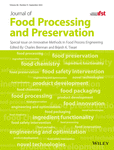Judge the taste quality of rice by screening the thickness of rice under nitrogen conditions
Funding information
This work was supported by the State Key Special Program (nos. 2018YFD0301304 and 2017YFD0301400), the National Natural Science Foundation of China (no. 31701359), the Fundamental Research Funds for the Central Universities (no. 2662019QD049).
Abstract
The nitrogen fertilizer led to an increase in the proportion of grains with a thickness of 2.1 mm or more. Under the same thickness, nitrogen increased the brown rice percentage, milled rice percentage, head rice percentage, and chalkiness of rice. The protein content of rice gradually increased, and the amylose content decreased. Breakdown, peak viscosity, and swelling power gradually decreased. High nitrogen fertilizer reduced the taste value of rice. As the thickness of the paddy rice increased, the milling quality, taste quality, and appearance quality of the rice were improved, the protein content was gradually reduced, and the swelling power, breakdown, and peak viscosity of the starch were gradually increased and then decreased. The protein content had the most important role in affecting the taste of rice. At high nitrogen levels, rice grains with a thickness of more than 2.2 mm had the highest taste value.
Novelty impact statement
The relationship between rice thickness and rice chemical composition under nitrogen fertilizer treatment was discovered for the first time. Under high nitrogen conditions, the taste quality of grains with a thickness of 2.2 mm or more was better. Protein content was the most important factor affecting the rice taste quality.
CONFLICT OF INTEREST
The authors declare no conflict of interest for this article.
Open Research
DATA AVAILABILITY STATEMENT
The data that support the findings of this study are available from the corresponding author upon reasonable request.




